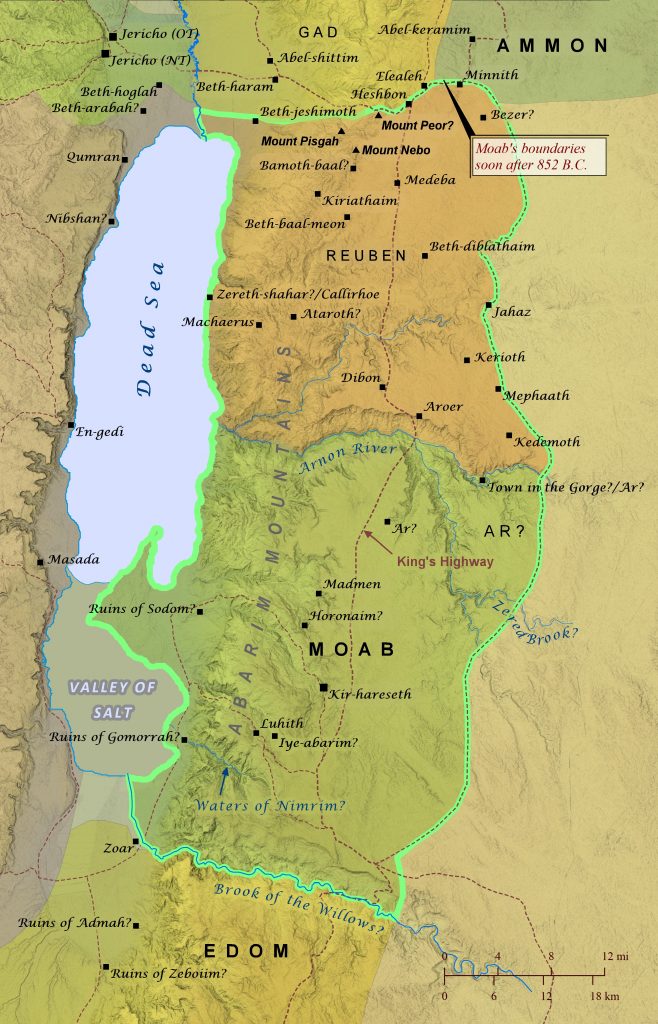Throughout the Old Testament, the land immediately east of the Dead Sea was home to the nation of Moab and also to the Israelite tribe of Reuben. The Moabites were distantly related to the Israelites through Abraham’s nephew Lot (Genesis 19; see “Sodom and Gomorrah Are Destroyed” map), and as the Israelites made their way to the Promised Land under Moses’ leadership, they had to pass by Moab’s territory (Numbers 21:10-20; Deuteronomy 2:1-23; see “The Journey to Abel-Shittim” map), but they were not to take anything that belonged to them. After crossing the Arnon River, the Israelites were confronted by King Sihon of the Amorites, but the Israelites defeated him and captured his land (Numbers 21:21-31; Deuteronomy 2:24-36; Judges 11:19-22). Part of this land, which Sihon had actually seized from Moab years earlier (Numbers 21:26), was allotted to the tribe of Reuben for their inheritance. The Ammonites also laid claim to this land, though it is not clear whether they had ever actually controlled it (Judges 11:13). Over the centuries that followed, Israel’s relationship with the Moabites was sometimes peaceful, such as when Naomi and her family moved to Moab to escape famine in Judah (Ruth 1:1; see “The Setting of Ruth” map). David (Naomi’s great-grandson) also placed his parents in the care of the king of Moab while fleeing from Saul (1 Samuel 22:3-4; see “David Flees from Saul (A)” map). Other times, however, the Israelites fought against the Moabites (Judges 3:12-30; 2 Samuel 8:1-2; 2 Kings 3; 1 Chronicles 18:1-2; 2 Chronicles 20), and eventually David subjugated them (2 Samuel 8:1-2). But sometime around 853 B.C., King Mesha of Moab reestablished his nation’s independence and expanded its borders northward to include all the territory of Reuben once again (2 Kings 1:1). This lost territory would remain under the control of various foreign rulers for another 700 years until the time of the Maccabees.

